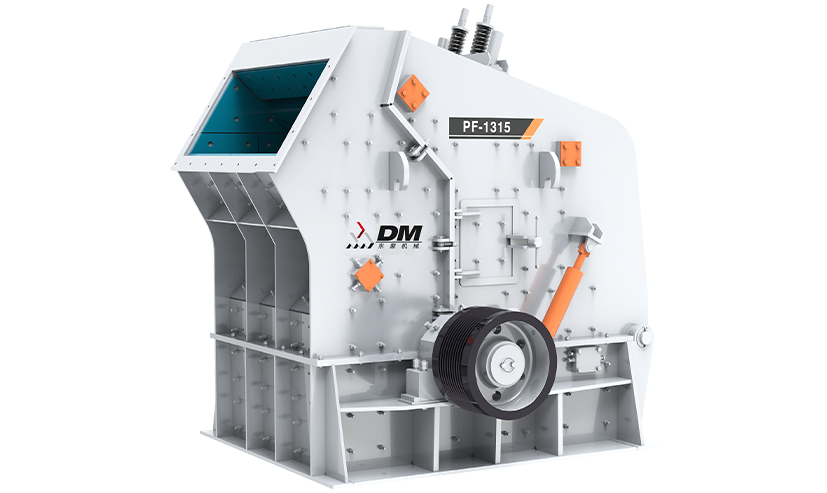Machinery Weight 55-72t
Max Feeding size(mm) ≤700mm
Hopper Volume(m³) /
Understanding Crushing Efficiency in Practical Terms
Crushing efficiency is a central performance indicator when evaluating any industrial crushing equipment. For a China Stationary Crusher, the term refers to how effectively the machine can reduce raw materials into desired particle sizes with energy, time, and operational costs. Unlike mobile crushing units, stationary crushers are installed at fixed sites and are expected to deliver consistent throughput and quality. As such, evaluating their efficiency requires a combination of technical parameters and real-world output observations.

Throughput Capacity and Feed Size Compatibility
One of the primary measures of crushing efficiency is the throughput capacity, typically expressed in tons per hour (TPH). A highly efficient crusher should be able to process a large volume of material consistently, regardless of variations in feed characteristics. The compatibility between the feed size and the crusher’s input capacity is also crucial. When input materials are appropriately sized for the machine’s design, less energy is wasted on unnecessary pre-processing, and wear on internal components is reduced, causing higher output rates.
Particle Size Distribution and Final Product Quality
Efficiency is not only about quantity but also about the quality of the final output. An efficient China Stationary Crusher should deliver a product with uniform particle size distribution, aligned with the production requirements of downstream processes. The ability to consistently achieve a targeted reduction ratio—how much the material is reduced in size—is a critical metric. Crushing systems with adjustable settings allow operators to fine-tune the output size, thus improving efficiency and reducing the need for reprocessing or secondary crushing.
Energy Consumption per Ton of Output
Another vital indicator is the amount of energy consumed per ton of processed material. Lower energy usage without compromising output quality reflects a more efficient operation. This metric becomes particularly important when considering the operational costs over the long term. Newer generations of China Stationary Crusher models often incorporate energy-efficient motors and intelligent control systems that optimize power usage based on load conditions.
Downtime and Maintenance Frequency
Even the productive machine can lose efficiency due to frequent downtime or complex maintenance requirements. Therefore, a comprehensive efficiency evaluation should include the machine's reliability and serviceability. A stationary crusher designed with easy-access maintenance zones, wear-resistant components, and predictive diagnostic features tends to operate with fewer interruptions, contributing to higher overall efficiency.
Automation and Process Integration
Modern crushing plants often integrate the crusher into an automated processing line. An efficient China Stationary Crusher is typically equipped with sensors, variable frequency drives, and PLC-controlled automation systems. These features help maintain consistent feed rates, reduce idle time, and adapt to changes in material hardness or moisture. The more seamlessly a crusher integrates into the broader processing workflow, the more it contributes to overall plant efficiency.
Operational Environment and Real-World Testing
Laboratory test data may provide baseline efficiency figures, but real-world conditions such as material variability, climate, and operator skill can significantly affect performance. Therefore, field testing under actual operating conditions remains one of the accurate ways to evaluate the crushing efficiency of any equipment. Continuous monitoring and performance analytics help identify inefficiencies and areas for process improvement.
Conclusion: Efficiency Is a Holistic Evaluation
Assessing the crushing efficiency of a China Stationary Crusher involves more than one metric—it is a multifaceted process combining throughput, energy use, output quality, and reliability. A comprehensive evaluation includes both technical specifications and operational data to determine how well the machine performs in a real-world production setting. By focusing on these areas, plant operators can make informed decisions that improve productivity while keeping long-term costs in check.
Machinery Weight 53-62t
Max Feeding size(mm) ≤600mm
Hopper Volume(m³) 80-360t/h
Machinery Weight 55-57t
Max Feeding size(mm) ≤215mm
Hopper Volume(m³) /
Machinery Weight 33-35t
Max Feeding size(mm) 150-400t/h
Hopper Volume(m³) 2.5
Machinery Weight 33t
Max Feeding size(mm) 150-400t/h
Hopper Volume(m³) 7m³
Machinery Weight 54-63t
Max Feeding size(mm) ≤600mm
Hopper Volume(m³) /
Machinery Weight 9.5-75t
Max Feeding size(mm) ≤1000mm
Hopper Volume(m³) 61-1204t/h
Just let we know what you want, and we will get in touch with you as soon as possible!